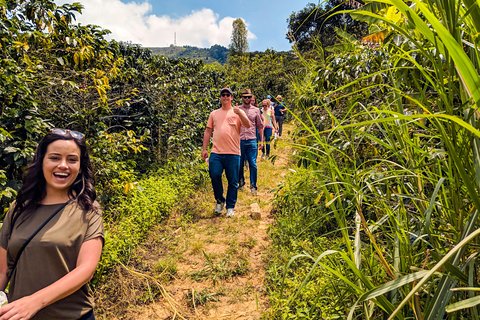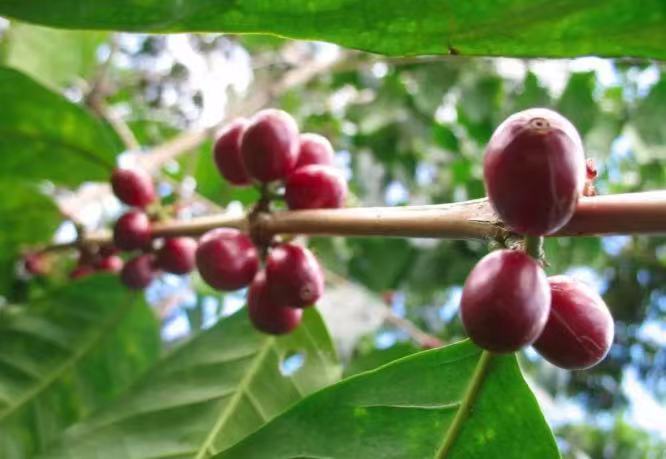Columbia Coffee Capital-medellin production area Story Colombian Coffee growing area Culture
Located in a narrow valley between two Andean ridges, the Colombian city of Medellin is a prosperous metropolis with a population of more than 2.5 million. Because of its mild and pleasant climate, it is also known in Colombia as la ciudad de eterna primavera, or the City of Eternal Spring.
Like in many Colombian cities, Medellin has a strong coffee culture, from bitter, strong Tintos served on street corners to fast-growing boutique coffee shops. For Medellin, however, coffee is more than just a drink; it is a way of life related to the production of Antioquia and the consumption of the city itself.

Thanks to the good climate of the region and the fertile mountain terrain nearby, coffee has a long and successful history in Medellin and the wider Antioquia region.
At the turn of the 20th century, Antioquia overtook the Caldas region to become Colombia's leading coffee growing region. Soon, it was recognized for providing consistent high-quality beans. In addition to gold mining, the production of coffee has made a great contribution to the growth of the region throughout the century. There are so many kinds of coffee in Colombia that there are even rosy summer varieties.
Medellin has always been the capital of coffee in the eyes of many Colombians.
Colombia produces more than 1300 million bags of 60 kg coffee each year, accounting for about 10 per cent of global coffee production (according to 2019 data). However, despite the large scale of production and exports, coffee consumption in Colombia is quite different (like many other producing countries), with a per capita consumption of about 2 kg.
In recent years, however, coffee consumption has begun to increase, thanks in part to activities and initiatives supported by FNC.

Ilse Geyskens, owner of El Poblado Cafe Velvet, says the long history of coffee production in Antioquia has played a key role in driving Medellin's coffee consumption.
Over time, Colombia has a reputation for producing some of the world's finest coffee and exporting it in large quantities. After Brazil, it is the largest coffee producer in Latin America and the third largest coffee producer in the world.
Antioquian coffee producers are usually small farmers who grow coffee at high altitudes and relatively low temperatures, both of which are well suited for producing quality Arabica coffee. These conditions cause cherries to ripen more slowly, producing strong flavors and unique aromas.
However, although Colombian coffee has traditionally been sold to consumer markets around the world with high quality, Colombians traditionally do not drink boutique coffee.
This depends in part on the country's export quality standards. Coffee beans above certain quality standards are marked for export, which is very similar to Blue Mountain Coffee, and the standards for exported products are very high. Coffee beans that are lower than certain quality standards are reserved for domestic use.
Therefore, historically, it has been difficult for Colombians to obtain high-quality coffee, whether in coffee shops or at home.
Coffee in the country has traditionally been consumed as tinto, a thick espresso that is usually sold on street corners in heated flasks. Tinto is usually made from low-quality coffee reserved for internal consumption, and sugar is usually added to mask its strong bitterness.
Like any other city, Medellin is divided into many unique neighborhoods. Everyone has their own unique personality and characteristics, which makes the city has a unique coffee culture today. It's like different manning coffees have different names. As for the city's boutique coffee shops, their preferences and trends are similar to those of large coffee consumers, but they are still rooted in the appreciation of high-quality local coffee. Many people in the city are proud to celebrate the work of the country's coffee producers by providing high-quality Colombian coffee. In the end, the core of the Medellin coffee experience is a simple appreciation of well-made drinks. This resonates with the broader global profession and the third wave of coffee culture.
Important Notice :
前街咖啡 FrontStreet Coffee has moved to new addredd:
FrontStreet Coffee Address: 315,Donghua East Road,GuangZhou
Tel:020 38364473
- Prev

The History of Coffee in Colombia the types and characteristics of Climate in Coffee growing areas
Colombian coffee, which accounts for about 12% of the world's coffee supply, is highly respected worldwide and is one of the major participants in the global coffee industry. The main reason is that the efficient infrastructure provided by rural farmers and the early growth of coffee exports in the region have made it a great power today. History and Geography of Colombian Coffee: the Origin Story of Colombian beans has been passed through several
- Next

Bird meaning on Starbucks Columbia Coffee Bean Story package flavour characteristics of Colombian Coffee Bean
Starbucks has always loved Colombian coffee and continues to have a relationship with Colombian coffee because of its round wine, juicy taste and signature nutty flavor. The Andes, among the rugged volcanoes, is where Colombia's finest coffee beans like to grow. The Colombian miracle erupts on the palate with a juicy feeling and a rich taste, proving that
Related
- Detailed explanation of Jadeite planting Land in Panamanian Jadeite Manor introduction to the grading system of Jadeite competitive bidding, Red bid, Green bid and Rose Summer
- Story of Coffee planting in Brenka region of Costa Rica Stonehenge Manor anaerobic heavy honey treatment of flavor mouth
- What's on the barrel of Blue Mountain Coffee beans?
- Can American coffee also pull flowers? How to use hot American style to pull out a good-looking pattern?
- Can you make a cold extract with coffee beans? What is the right proportion for cold-extracted coffee formula?
- Indonesian PWN Gold Mandrine Coffee Origin Features Flavor How to Chong? Mandolin coffee is American.
- A brief introduction to the flavor characteristics of Brazilian yellow bourbon coffee beans
- What is the effect of different water quality on the flavor of cold-extracted coffee? What kind of water is best for brewing coffee?
- Why do you think of Rose Summer whenever you mention Panamanian coffee?
- Introduction to the characteristics of authentic blue mountain coffee bean producing areas? What is the CIB Coffee Authority in Jamaica?

